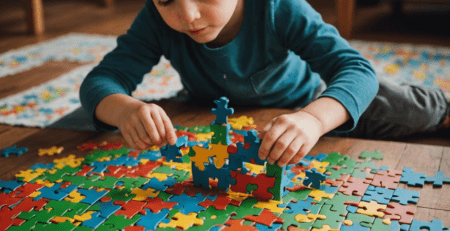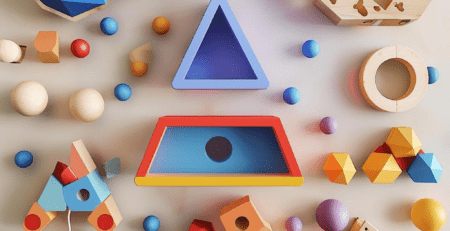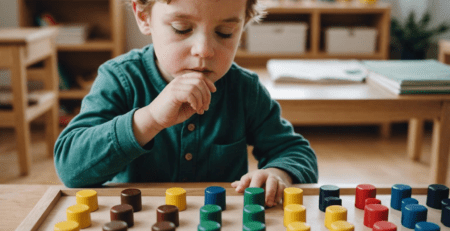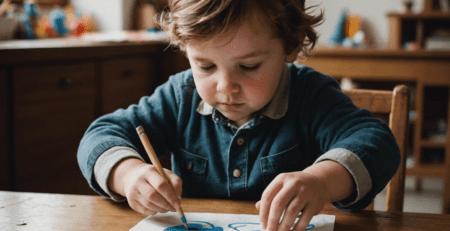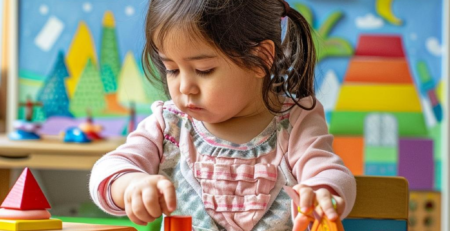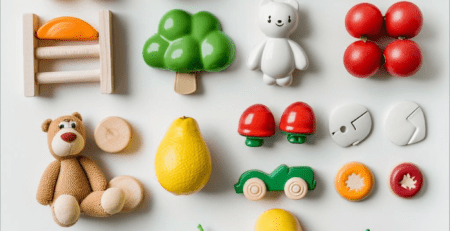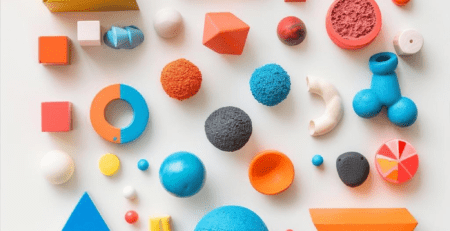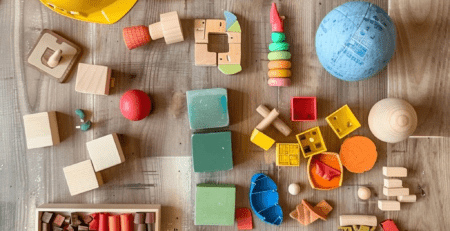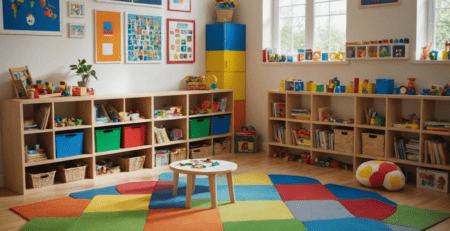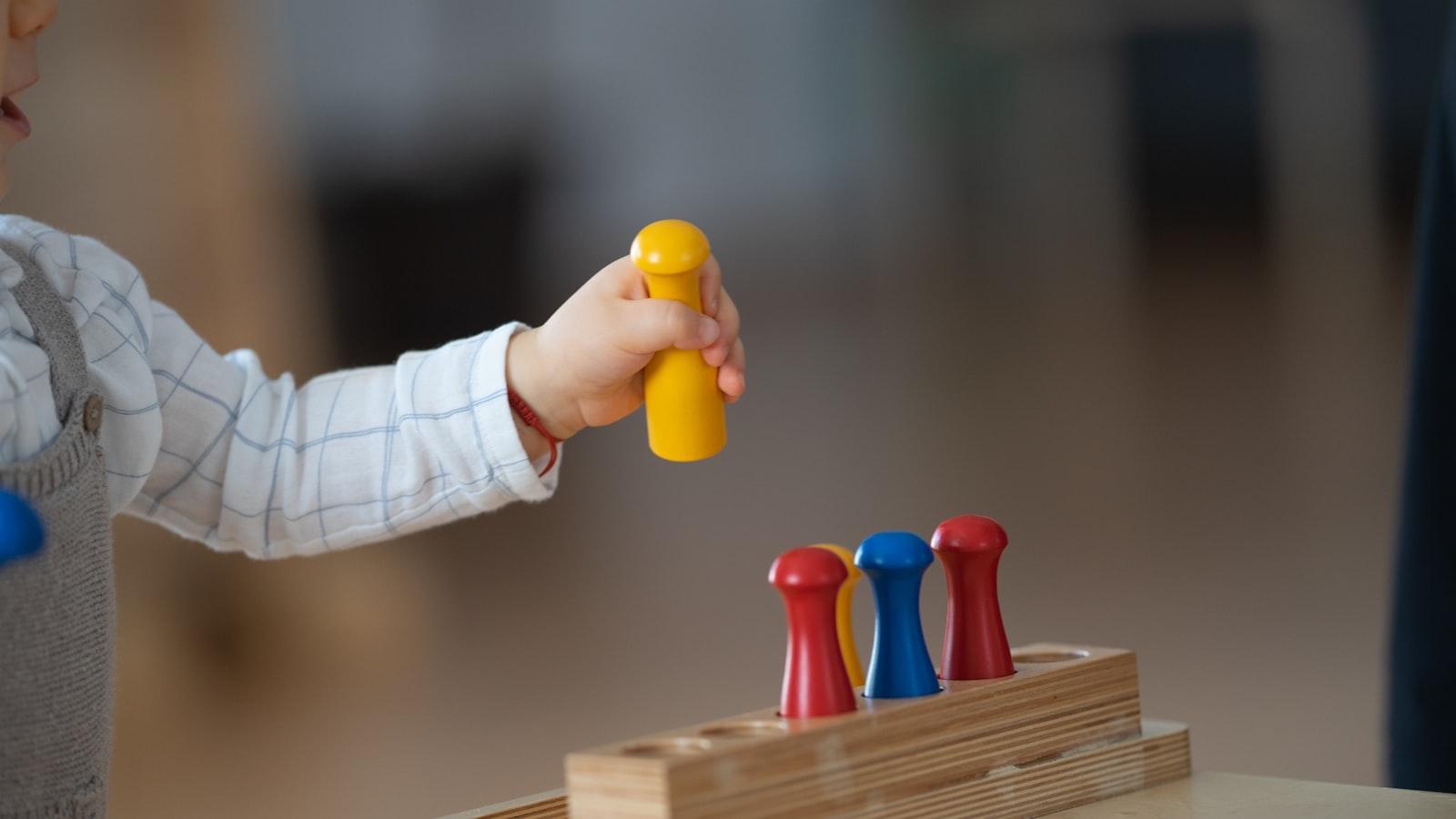
29
10 Tips for Designing a Montessori Home Environment
As we navigate through the ever-changing landscape of education and early childhood development, more and more parents are turning to the Montessori method to provide a nurturing and stimulating environment for their children. Creating a Montessori space at home is not just about arranging furniture and toys—it’s about fostering independence, curiosity, and a love for learning. By incorporating Montessori principles into your home, you can empower your child to explore their world and grow into confident, capable individuals. In this article, we’ll explore practical and creative tips for turning your home into a Montessori-inspired haven, where your child can thrive and flourish.
Table of Contents
- Creating a Montessori Space at Home
- Choosing the Right Furniture and Materials
- Organizing the Environment for Independence
- Creating Sensory and Practical Life Areas
- Incorporating Natural Materials
- Fostering a Love of Learning Through the Environment
- Q&A
- Insights and Conclusions
Creating a Montessori Space at Home
Creating a Montessori space at home is a wonderful way to foster your child’s independence, creativity, and love for learning. By incorporating Montessori principles into your home environment, you can provide a nurturing and enriching space for your child to thrive. Here are some tips for creating a Montessori-inspired space at home:
1. Simplify the Environment: One of the key aspects of Montessori education is the emphasis on simplicity and order. Create a clutter-free environment by decluttering and organizing your child’s play area. This will allow your child to focus better and engage in purposeful activities.
2. Involve Your Child in the Process: Encourage your child to participate in setting up their Montessori space. Let them choose and arrange their toys and materials, giving them a sense of ownership and responsibility for their environment.
3. Provide Open-ended Toys and Materials: Offer a variety of open-ended toys and materials that promote creativity, exploration, and problem-solving. Items like wooden blocks, puzzles, and art supplies can spark your child’s imagination and encourage independent play.
4. Create Learning Stations: Arrange different learning stations within the Montessori space, such as a reading corner, art area, and practical life activities. This allows your child to engage in various activities based on their interests and development.
By implementing these strategies, you can create a Montessori-inspired space at home that supports your child’s natural development and love for learning. Embracing the Montessori philosophy can have a lasting positive impact on your child’s growth and overall well-being.
Choosing the Right Furniture and Materials
When creating a Montessori space at home, it’s essential to choose the right furniture and materials that promote independence, exploration, and learning for your child. Montessori furniture and materials are designed to be child-sized and accessible, allowing children to engage in activities independently and at their own pace.
Here are some factors to consider when choosing the right furniture and materials for your Montessori space:
- Child-sized furniture: Opt for low tables, chairs, and shelves that are accessible to your child and allow them to do activities independently.
- Natural materials: Choose furniture and materials made from natural, sustainable materials such as wood, cotton, and wool to provide a calming and soothing environment for your child.
- Open-ended materials: Select toys and materials that encourage open-ended play and exploration, such as wooden blocks, puzzles, and art supplies.
- Functional design: Look for furniture and materials that serve a specific purpose and promote practical life skills, such as practical life activities and sensorial materials.
By carefully for your Montessori space at home, you can create an environment that fosters independence, creativity, and learning for your child.
Organizing the Environment for Independence
Creating a Montessori space at home can be a rewarding and enriching experience for both children and parents. The Montessori method emphasizes independence, freedom within limits, and respect for a child’s natural psychological, physical, and social development. To create a Montessori space at home, it is essential to organize the environment in a way that promotes independence and self-directed learning. Here are some key tips for organizing the environment to foster independence in a Montessori space at home:
Accessible Materials: Ensure that all materials and resources are easily accessible to the child. Organize shelves and storage in a way that allows the child to reach and use items without assistance.
Child-Sized Furniture: Use child-sized furniture such as tables, chairs, and shelves to encourage independent movement and exploration. This allows children to engage with their environment at their own pace and without needing adult assistance.
Clear and Defined Spaces: Create distinct areas within the environment for various activities such as reading, art, and practical life skills. This allows children to independently choose and engage in activities that align with their interests and developmental needs.
Purposeful Order: Arrange materials and activities in a purposeful order to promote a sense of sequence and order. This helps children understand the flow of activities and encourages independent engagement without constant guidance from adults.
Natural and Simple Materials: Incorporate natural and simple materials such as wood, glass, and fabric into the environment to promote a sense of calm, beauty, and connection with the natural world.
Creating a Montessori space at home involves thoughtful organization and design to support a child’s independence and self-discovery. By implementing these tips, parents can create a nurturing and stimulating environment that cultivates independence, creativity, and a lifelong love of learning.
Creating Sensory and Practical Life Areas
Sensory Area: The sensory area should include a variety of materials that engage the senses, such as different textures, colors, sounds, and scents. This can include items like sensory bins filled with materials like rice, beans, or water, as well as musical instruments, colorful fabrics, and natural materials like pinecones and shells. By providing a range of sensory experiences, you can help your child refine their sensory perception and develop cognitive skills.
Practical Life Area: The practical life area is designed to help children develop essential life skills, such as pouring, scooping, sweeping, and buttoning. It should include child-sized versions of real-life tools and materials, such as pitchers, spoons, dustpans, and dressing frames. By allowing your child to engage in everyday tasks in a safe and supportive environment, you can promote their independence and confidence.
| Materials for Sensory Area: | 1. Sensory bins (rice, beans, water) | 2. Musical instruments | 3. Colorful fabrics | 4. Natural materials (pinecones, shells) |
|---|---|---|---|---|
| Materials for Practical Life Area: | 1. Child-sized pitchers | 2. Small spoons | 3. Dustpan and brush | 4. Dressing frames |
Incorporating Natural Materials
When creating a Montessori space at home, is essential to foster a sense of connection with the environment and promote sensory exploration. Natural materials such as wood, cotton, and wool provide children with tactile experiences that encourage them to engage with their surroundings in a meaningful way.
Benefits of using natural materials in a Montessori space:
– Engages the senses: Natural materials offer unique textures and scents that stimulate touch and smell, allowing children to explore and learn through their senses.
– Promotes sustainability: By using eco-friendly and biodegradable materials, you teach children the importance of taking care of the planet and encourage a sense of environmental responsibility.
- Inspires creativity: Natural materials often come in various shapes, sizes, and colors, sparking creativity and imaginative play among children as they interact with the environment.
Fostering a Love of Learning Through the Environment
Creating a Montessori Space:
- Child-Centric: Design the space with your child in mind, ensuring everything is accessible to them at their height. This fosters independence and encourages them to explore and engage with their environment.
- Natural Materials: Choose furniture, toys, and materials made from natural materials like wood, cotton, and glass. This connects children with nature and promotes a sense of calm and mindfulness.
- Freedom of Movement: Allow space for movement and exploration. Avoid clutter and create open areas for your child to move freely, promoting physical and cognitive development.
- Order and Structure: Implement a sense of order and structure in the environment, with designated areas for different activities. This helps children understand boundaries and develop a sense of responsibility.
- Promote Creativity: Provide a variety of open-ended and sensory-rich materials that encourage creativity, problem-solving, and imagination.
The Benefits of a Montessori Environment
Creating a Montessori space at home offers numerous benefits for children’s learning and development. The environment plays a crucial role in shaping a child’s experiences, interactions, and overall growth.
Benefits of a Montessori Environment:
- Promotes Independence: Children learn to take responsibility for their environment and their own learning, leading to a sense of empowerment and self-confidence.
- Encourages Curiosity: The open, child-centric environment fosters natural curiosity and a love of learning, allowing children to explore and discover at their own pace.
- Develops Life Skills: Through practical activities and real-life experiences, children develop essential life skills such as problem-solving, decision-making, and self-care.
- Fosters Respect: Children learn to respect their environment, materials, and others, promoting a sense of empathy, mindfulness, and community.
- Nurtures Creativity: The emphasis on open-ended materials and freedom of expression sparks creativity and innovation in children, shaping them into imaginative and resourceful individuals.
Incorporating the Montessori approach into your home environment not only cultivates a love of learning but also nurtures essential life skills and qualities that will benefit your child in the long run.
Q&A
Q: What is a Montessori space at home?
A: A Montessori space at home is a carefully designed environment that encourages independent learning and exploration for children, incorporating principles from the Montessori educational philosophy.
Q: What are the key elements of a Montessori space at home?
A: A Montessori space at home includes child-sized furniture and materials, open shelving for easy access to toys and learning materials, natural lighting, and a calm and orderly layout.
Q: How can parents create a Montessori space at home?
A: Parents can create a Montessori space at home by decluttering the environment, selecting age-appropriate toys and learning materials, and arranging the space to be easily accessible for the child.
Q: Why is it important to create a Montessori space at home?
A: Creating a Montessori space at home allows children to develop independence, self-discipline, and a love for learning, while also promoting a sense of order and responsibility.
Q: Can a Montessori space be created on a budget?
A: Yes, a Montessori space can be created on a budget by repurposing existing furniture, DIY-ing learning materials, and using open-ended toys that can be sourced from thrift stores or online marketplaces.
Q: What age range is a Montessori space suitable for?
A: A Montessori space is suitable for children from birth to around six years old, as it is designed to support the child’s natural development in the areas of movement, language, and sensory exploration.
Insights and Conclusions
In conclusion, creating a Montessori space at home can provide countless benefits for your child’s development. By incorporating elements of independence, order, and freedom within the home environment, you can empower your child to explore and learn at their own pace. Whether it’s establishing a designated work area or carefully selecting developmental toys and materials, the principles of Montessori education can be seamlessly integrated into your home. Through this intentional approach, you can foster a love for learning and cultivate a sense of autonomy in your child. So, let’s embrace the Montessori philosophy and create a nurturing space that supports your child’s natural curiosity and growth. With a little creativity and dedication, you can transform your home into a Montessori haven for your little one.

